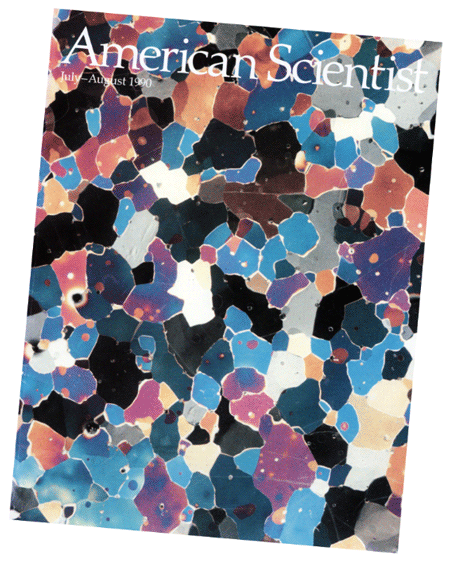
This Article From Issue
September-October 2015
Volume 103, Number 5
Page 306
DOI: 10.1511/2015.116.306
Soon after I arrived at Sigma Xi, I received a set of keys that gave me access to various rooms in the headquarters building. One of them opened the American Scientist archive tucked away in the basement. Assuming that our high-tech digital publishing operation precluded any need to access those analog files, I gave the room little notice. In fact, although I routinely consulted our digital archives, I confess that my key to the physical archive went unused. That is, until the time came to pack up the room’s contents.
Just as we were celebrating two milestones—25 years in North Carolina’s Research Triangle Park and more than a decade in a spacious headquarters building—Sigma Xi was on the move again. In May the Society sold the Sigma Xi Center to a local STEM charter high school and leased a newly designed space next door. This would be Sigma Xi’s and American Scientist’s third home since departing New Haven, Connecticut, in 1990.

At that time, Brian Hayes, former editor of American Scientist and currently our senior writer and longtime Computing Science columnist, skillfully assembled a North Carolina team to replace those who elected not to relocate. They rallied for the next six months to publish the first RTP-based issue of American Scientist. Shortly after, in 1992, Rosalind Reid became the magazine’s editor, a position she would hold for 16 years. David Schoonmaker replaced Ros in 2008 and stewarded the magazine until Corey Powell took the helm prior to my arrival. As the magazine thrived, documents and records filled the archive room and propagated into any available space. But the time had now arrived for those documents to be gathered and relocated.
Digging through the archive room, we discovered a virtual treasure trove of historical goodies from bygone years—E. O. Wilson’s phone number scribbled on a notepad, photos of Jane Goodall meeting with Sigma Xi members, copies of American Scientist dating back to the early 1900s, and an envelope containing photos of a curious-looking cake. That cake would serve as an inspiration as we prepared to write the next chapter of American Scientist’s history.
Adorned with a multicolored patchwork of icing, the cake bore a facsimile of the cover of the July–August 1990 issue of American Scientist. The photo was taken during a press party where Brian and the new staff celebrated the publication of their first issue. It conveyed a sense of determination embodied by the many incarnations American Scientist has assumed since its start 103 years ago.
The July–August 1990 issue contained an article titled “ The Global Carbon Cycle ,” coauthored by a group led by Wilfred Post. It described the “dynamic responses of natural systems to atmospheric carbon dioxide.” This piece in effect updated an earlier American Scientist article, written by Charles F. Baes Jr. in 1977, detailing advances in contemporary carbon-cycle research. Both articles serve as a reminder that each issue of American Scientist is part of a continuum, linking scientific research from the remote past with that of the present.
In addition to our traditional collection of exceptional science features, this issue—the first produced from our new location—includes the latest update in this sequence: For Spotlight, associate editor Katie Burke interviews geochemist Avner Vengosh about the latest research on the risks of hydraulic fracturing. His responses reflect advances achieved in climate research since Baes and Post previously wrote about it, namely, the confirmation that carbon emitted from human activities is a major driver of global warming. American Scientist has covered advances in climate research from its earliest days. We are ecstatic to be able to continue to do so from our new headquarters. Rest assured that we will be celebrating with a cake of our own. —Jamie L. Vernon ( @JLVernonPhD)
American Scientist Comments and Discussion
To discuss our articles or comment on them, please share them and tag American Scientist on social media platforms. Here are links to our profiles on Twitter, Facebook, and LinkedIn.
If we re-share your post, we will moderate comments/discussion following our comments policy.